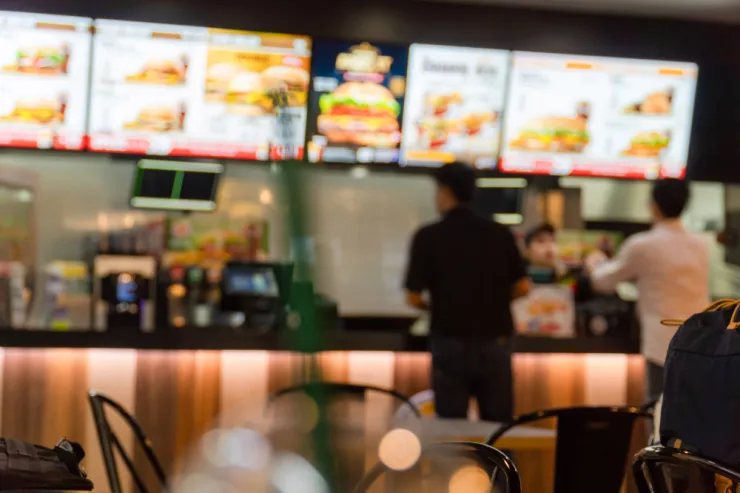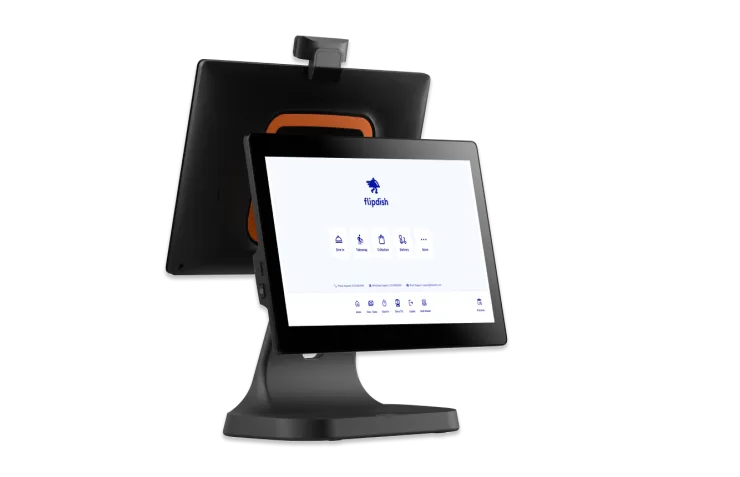
The hospitality industry is notorious for having lower profit margins than other business types. In fact, restaurant profit margins in the United States in 2019 hovered anywhere between just 3 and 9% and since then the world has been upended.
2021 was a comeback year for many restaurants with dining rooms reopening but 2022 has been a year of rising inflation, higher food costs and a staff shortage increasing labour costs.
Even big brands like Wendy's in the US posted disappointing profit margins that fell just below the 14.9% investors were looking for. For smaller restaurants, it has been nearly impossible to make a decent margin without raising prices.
Reporting from CSI Market shows net margins across the industry down at 9.59% in Q2 of 2022 from 16% in Q2 of 2021.
But as we always like to remind our readers, the success of a restaurant is a nuanced topic. You don’t need to be the standard — with the right tactics, your restaurant can be an exception to the rule, boast healthy profit margins, and stand the test of time.
Before you learn how to improve your restaurant profit margins, though, let’s quickly go through a crash course on everything profit margins.
- What are they?
- How do you calculate them?
- What’s the difference between gross and net profit?
Keep reading to learn more!
What are restaurant profit margins?
Your restaurant profit margins are your restaurant’s profits expressed as a percentage of annual sales — this is unlike profit, which is when you express profit as a dollar value.
To find your profit margins, you must subtract all of your expenses (fixed, variable, and mixed) from gross revenue. This is where most restaurants lose out on profit margins. When operating expenses like your rent, utilities, labour costs, credit card processing fees, and food costs are too high, it can take a big chunk out of your profit.
The higher your profit margins, the better. But as we’ll cover in the next section, profit margins will vary depending on your restaurant type.

What is a good profit margin for restaurants?
While this is a common question to ask, the reality is there is no such thing as a good average profit margin for restaurants. What’s considered a good profit margin for one restaurant may not necessarily be as good for another. It depends entirely on the ratio between your operating and overhead expenses with your total revenue.
And while profit margins surely vary from one restaurant to another, establishments that operate in the same category typically share a similar average profit margin range. Here’s a quick breakdown of how profit margins vary from one restaurant type to the other.
Full-service restaurants (FSRs)
FSRs are defined as any establishment that has management staff, servers, bartenders, a host, and kitchen staff. As you may expect, full-service restaurants boast lower profit margins on average, as their expenses typically run higher than other establishments.
As a result of having higher labour, overhead costs, and operating expenses than other establishments, their menu prices tend to be higher than other restaurant types as well. Once you take into account their ratio of revenue to expenses, full-service restaurants’ profit margins usually hover anywhere between 3 and 5%.
Quick-service restaurants (QSRs)
While there are exceptions to the rule, QSRs usually have higher profit margins (between 6 and 9% on average) than their full-service counterparts. This is a result of a few factors: less staff, higher sales volume, and cheaper ingredients, to name a few. However, more and more, fast food restaurants are incorporating online ordering and delivery as revenue streams, which bring with them additional expenses.
Food trucks
Food trucks are an interesting case. While operating out of the back of a truck brings with it entirely new expenses — fuel, specialised licenses and permits, for instance — food trucks are gaining notoriety for using high-quality ingredients and serving up gourmet dishes in an unpretentious setting.
With low overhead costs to balance out more expensive ingredients, the average profit margin of a food truck is anywhere between 6 and 9%.

How to calculate restaurant profit margins
Before we dive into how you can calculate the profit margins of your own establishment, let’s first look at two different types of profit margins (gross profit and net profit) and the differences between them.
Gross profit margin for restaurants
When you hear the term gross profit margin, what it refers to is the sum of a menu item’s selling price (the revenue it generates) minus your cost of goods sold (CoGS) for that dish.
Calculating gross profit margin is useful to get a pulse on how efficiently your restaurant is generating profits, but it doesn’t give you the full picture.
To find out how much money you have in the bank, you need to deduct all operating expenses (like your monthly lease payment) from your gross profits. That’s what’s referred to as your net profit margin - but we’ll get to that a little later.
Gross profit margin formula
The formula for calculating gross profit margins is pretty straightforward. Simply deduce your CoGS over a specific time period from your total revenue. This information should be readily available in your restaurant POS system.
Gross profit margin = (total revenue from food sales - cost of goods sold) / total revenue from food sales
Let’s say you run a pizza shop, your total revenue for the month of May was $18,000, and your CoGS amounted to $7,000. Here’s how we’d find your gross profit margin:
Gross profit margin = (18,000 - 7,000) / 18,000
Gross profit margin = (11,000) / 18,000
Gross profit margin = 0.61
In this example, your pizza shop’s gross profit margin for the month of May is 61%, meaning that for every $1 a patron spends, 61 cents is gross profit that you can then use to pay for your other fixed, variable, and mixed expenses (things like your administrative costs, payroll, utility bill, insurance, taxes, etc).
Net profit margin for restaurants
Your net profit margin refers to the profits leftover once you deduct all of your fixed, variable, and mixed expenses from your gross profit margin. That sum is the money that you truly have in the bank.
Net profit margin formula
To find your net profit margin, you need to deduct all costs from your revenue over a given time period, then divide that sum into your revenue.
Net profit margin = (revenue - costs and expenses) / revenue
For example, let’s say you wanted to find your pizza shop’s net profit margin for the month of May. We already know you generated $18,000 in revenue, and your total expenses amount to $12,000. Here’s how you’d find your net profit margin:
Net profit margin = (18,000 - 12,000) / 18,000
Net profit margin = (6,000) / 18,000
Net profit margin = 0.33
It looks like, at 33%, your pizza shop’s net profit margin is less than its gross profit margin (61%), which is to be expected. This means that, for every 1$ your pizza shop generates in revenue, you take 33 cents to the bank after paying for all the costs associated with keeping the lights on and doors open.
Considering the Corporate Finance Institute reported that a 10% profit margin is average and a 20% profit margin is good, 33% is looking very good!
Ready for a cloud-based POS system?

Things you can do to improve your profit margins
Ultimately, there are two overarching ways to improve your restaurant’s profit margins: either by 1) increasing sales volume relative to your expenses or 2) lowering your expenses relative to sales volume.
That’s pretty straightforward, right? Hold on. There are many ways to generate more sales or lower your expenses — keep in mind that what works for one establishment may not work for yours.
For example, some QSR and FSR establishments may opt to purchase cheaper food inventory to cut down on food costs and increase profits. But what if patrons see a noticeable decline in overall food quality? They may opt to dine elsewhere in the future. Always weigh a tactic versus its potential negative ramifications before making a decision.
Lower restaurant expenses
Restaurant expenses typically fall under any of these three categories:
Cost of Goods Sold (CoGS)
Labor expenses
Overhead expenses
In most instances, CoGS accounts for roughly 30% of your revenue, with another 30% to labor and payroll. The remaining revenue needs to cover all of your additional overhead expenses (like rent, utility bills, taxes, etc).
Here are a few tactics for lowering restaurant expenses we’d recommend looking into.
Reduce food inventory waste
You already know how much food costs command from your budget, which means you also know that, when food spoils, that sunk cost can take a serious chunk out of your profit margins if left ignored.
We recommend getting serious about inventory management, especially for perishable, pricey ingredients like meats, assuring that you’re only buying as much as you can sell before spoilage occurs.
But having food inventory that’s past its prime is inevitable. That’s when your chefs can flex their creative muscles and develop new dishes that make the best of those ingredients. Use bones to make broths or soups, or older bread to make onion soup. There are plenty of options!
And finally, we can’t talk about managing food waste without touching on food storage. Assure while wrapping and storing food it is clearly labelled so that you stay on top of each ingredient’s respective best-before date.
Negotiate prices with vendors and suppliers
Most vendors and suppliers are open to negotiating prices. Connect with your vendors and go over your costs. Are they willing to renegotiate prices in exchange for earlier payments or higher-volume orders?
You’ll never know unless you ask, so ask!
Get smart about scheduling
Are you ever over (or under) staffed? Considering how much of your revenue goes towards paying staff, streamlining your staff schedules so that you’re able to meet customer demand — whether it’s your busiest service or a quiet one — is essential.
Track which times and days are busiest for your restaurant and adjust your schedule accordingly. You never want to have too many, or too few, staff scheduled.
We recommend taking a look at the sales reports in your POS system to spot your busiest and quietest days and times and adjusting your staff schedule in accordance with what you find. This simple trick assures you’re matching staffing levels to projected sales and keeping labor costs proportional to what you stand to generate in revenue.

Invest in energy-efficient restaurant equipment
Not all restaurant equipment is created equally. While there is certainly an upfront cost associated with purchasing new restaurant equipment, energy-efficient appliances can help you lower utility bills over time and save money.
For energy-efficient equipment, there’s a break-even point where you will officially recoup your initial investment and start actually saving money. Assess how long it will take you to recoup your investment and whether or not the long-term savings make sense for your establishment.
Increase sales volume
When it comes to increasing restaurant revenue, there are plenty of tactics to choose from — from opening up new revenue streams like online ordering and delivery to re-pricing dishes on your menu.
Consider online ordering
Pre-pandemic, online ordering and offering food delivery was seen as a “nice to have,” but since restaurants were forced to close table service, it became an essential lifeline. While the old way of tapping into online ordering was via third-party delivery apps like UberEats, DoorDash, Skip The Dishes or Postmates, their service fees were prohibitively high.
But now, restaurants are using native online ordering platforms that integrate with their website and enable them to sell directly to the end consumer. By going direct to consumer (DTC), Restaurants save upwards of 30% in commission fees and have total control over their customer experience — even when serving customers from a distance.
Rethink your menu prices
It’s a good idea to routinely review each menu item’s food costs relative to the revenue you make on each sale.
See what menu items are selling, what items aren’t, and consider replacing or removing menu items with high food costs that aren’t selling as well as you’d hoped. Additionally, consider whether or not you can reduce portion sizes to save on food costs. Just make sure that your guests are still getting good value considering the cost of the dish.
Train servers how to cross-sell and upsell
If you want to increase your restaurant’s table service revenue, your servers are your secret weapon.
Suggestive selling is when servers encourage guests to order menu items that they not have considered to increase the value of the transaction. And the results of suggestive selling speak for themselves.
But the best part? Suggestive selling doesn’t feel like a pushy, slimy sales technique. When done right, it delivers value to your guests by suggesting items that complement what they like or what they’ve already ordered.
Restaurant profit margins: a delicate balance
There is no singular way to increase profit margins that works in every restaurant’s context. To increase profit margins, you need to look at your establishment’s unique situation and determine which of the above tactics may work.
Dive into your expenses to find ways to lower them without compromising your customer experience, and analyse your sales channels to see if there are ways to increase your overall revenue.


